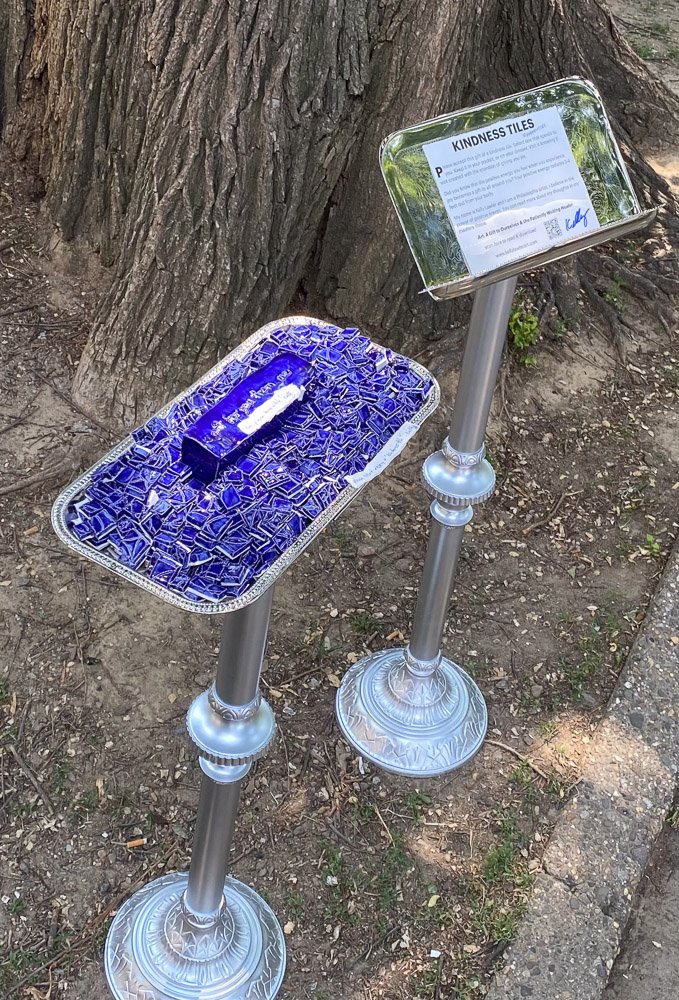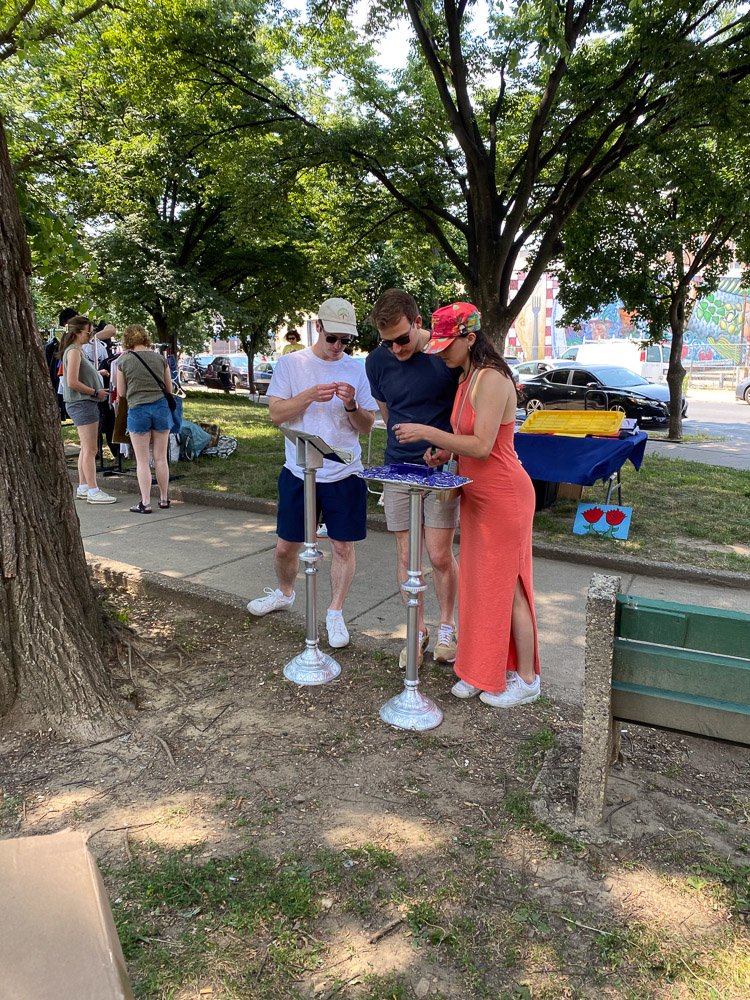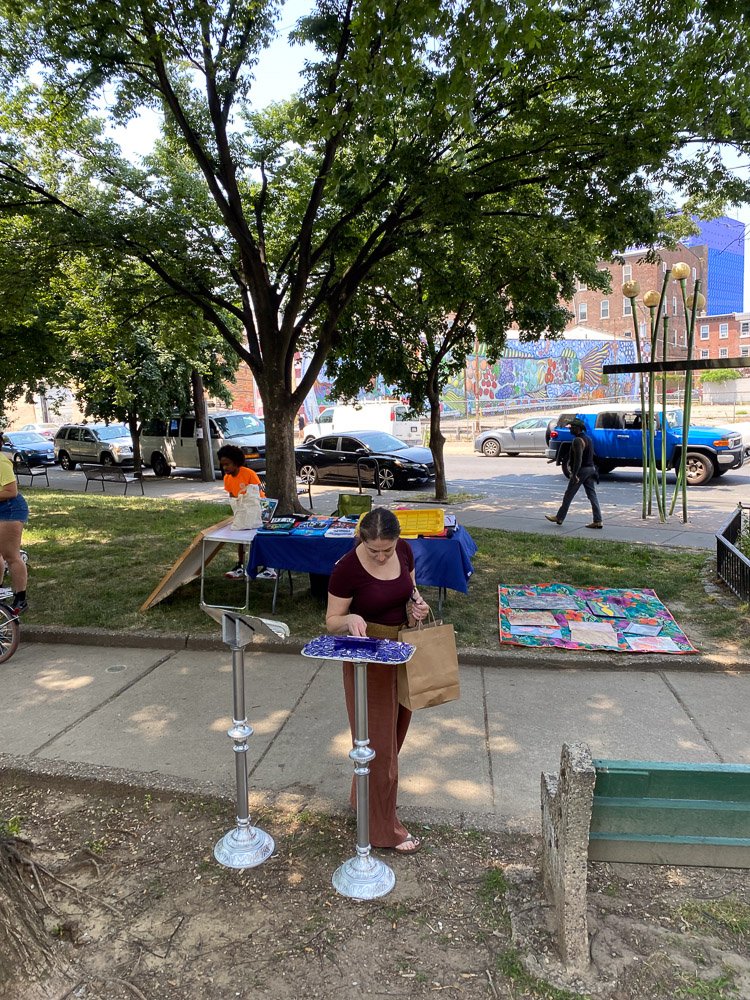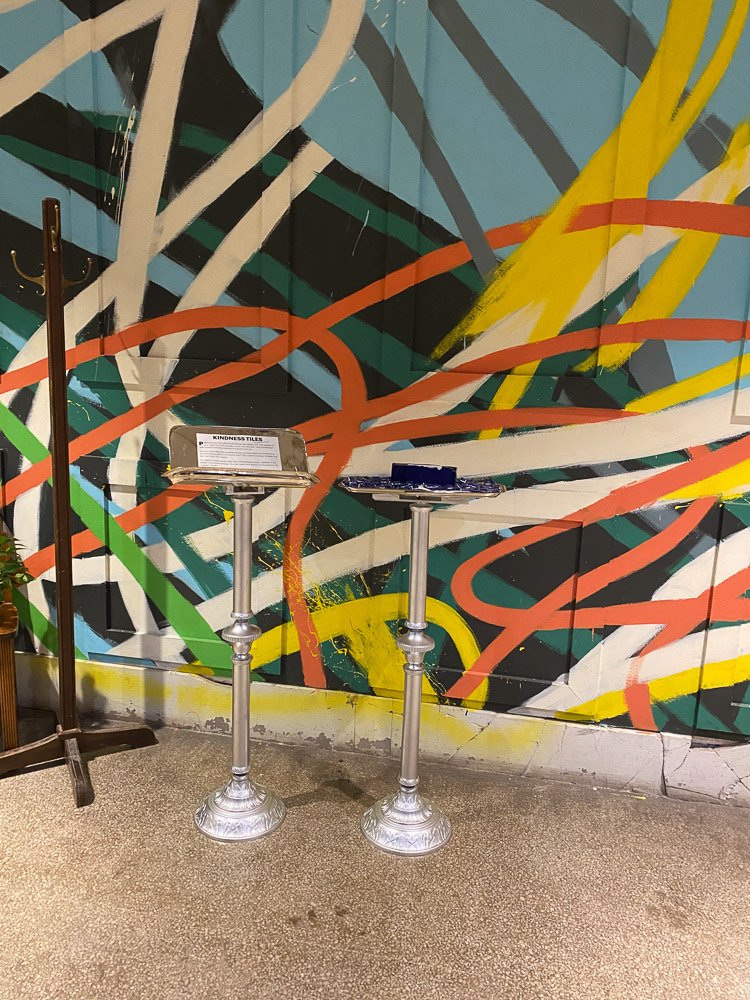Kindness Tiles
Chimaera Gallery, Community College of Philadelphia, 915 Spring Garden Building, Palmer Park, Philadelphia | 2023-25
1 inch x 1 inch ceramic tiles, a gift of kindness with the intention of giving joy.
What would it take to shift our world from the current, capitalistic, and consumerist culture to one that is driven by care? Care of people, care of the earth, and care of not just the physical elements, but shifting the point of view from which every decision, action, and choice is made. For each person to pause and consider, “who will this impact?” and “how can I care more in this moment?” To create a momentum of caring that brings people together in ways that have yet to occur, and with more a more emotional drive towards doing the right thing for the right reasons. A human change that impacts all creatures great and small, allowing for our values to better align with the greater good, and a collectively determined priority. - Kelly Lawler, “Time to Adopt a Mindset of Radical Care”The Kindness Tiles are 1 inch square clay tiles made from reclaimed clay and glaze, served on silver platters resting atop upcycled church stanchions. Each piece is made to be an intentional gift of kindness and sized to fit within pockets for ongoing appreciation and joy.
The top surface of the tiles are smooth from the glaze, except where an overlapping circular pattern has been cut with a compass, creating texture. Edges and corners are irregular, some sharply angled, others rounded. The bottom of the tile is lightly textured, raw fired clay. Each tile is a unique sensory experience of sight and touch, aiding in grounding mindfulness practice.

The tiles are literally and metaphorically touchstones. Held in the palm, they serve as tactile reminders to pause and return to the present moment, the experience of touch bringing awareness to the body, rooting the mind in the here and now. Like the historical touchstones used to test the quality of precious metals, these tiles invite reflection on the quality of thoughts, interactions, and presence. They are small, enduring symbols of care, resilience, and connection.
This gift of care can radiate outward, seeding positivity into the wider community. The Maharishi Effect suggests that when a small percentage of a population engages in positive intention, measurable improvements in community well-being can follow. The tactile experience of holding one, then, is both a private and public act—activating joy that may ripple through families, neighborhoods, and systems, encouraging a culture of care rooted in shared humanity.





This gift of care can radiate outward, seeding positivity into the wider community. The Maharishi Effect suggests that when a small percentage of a population engages in positive intention, measurable improvements in community well-being can follow. The tactile experience of holding one, then, is both a private and public act—activating joy that may ripple through families, neighborhoods, and systems, encouraging a culture of care rooted in shared humanity.







